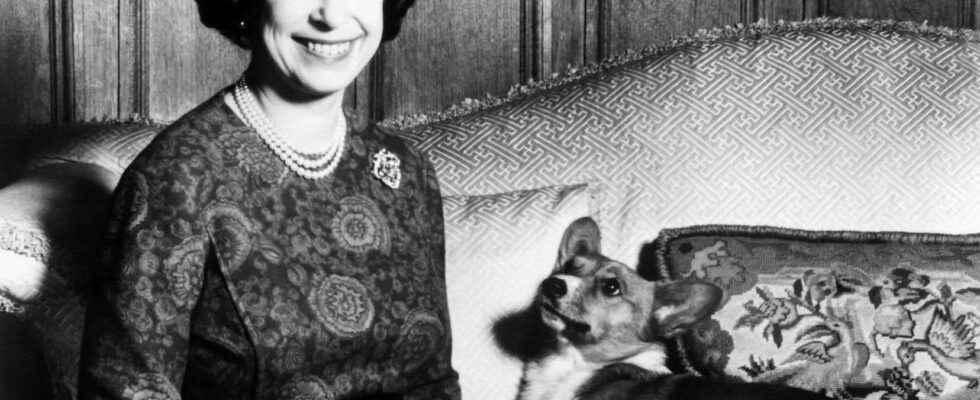Their fate had so far remained unresolved: the famous corgis of Queen Elizabeth II, small dogs that have become inseparable from the image of the sovereign who died Thursday at the age of 96, have finally found a home with her son. Prince Andrew and his ex-wife, the Duchess of York.
It was he who gave his mother the two little puppies last year. A way, no doubt, to brighten up the pandemic daily life of the confined monarch. Muick and Sandy were the last proud representatives of the more than 30 corgis the queen owned during her long life.
Princess Diana once called them a “moving carpet” always at her mother-in-law’s side.
The BBC has attempted to list almost the entire royal line of corgis, which spanned 14 generations.
The young Elisabeth discovered this breed of dog as a child, when her father, King George VI, introduced Dookie into the family in 1933. It was in 1944 that her parents gave her her very first corgi, Susan, for her 18th birthday. , from which most of his following dogs were descended. The last descendant of this dynasty, Willow, died in April 2018, leaving the queen corgis-free until recently.
Muick joined the family in early 2021 with another pup named Fergus. The latter, however, died a few weeks later, at the age of five months, shortly after the death of Prince Philippe, husband of the Queen. To replace him, Andrew and his daughters, Princesses Beatrice and Eugenie, had offered the sovereign little Sandy on the occasion of his 95e anniversary.
The monarch’s love for her corgis, many of which have been immortalized alongside her in a number of official photos or paintings, was well known. They can even be found in the hit TV series The Crown, which retraces the reign of the sovereign. They had also been the star of Jubilee celebrations in June marking 70 years of the monarch’s reign, including a gathering of 70 corgis at Balmoral.
What will happen to the Queen’s other two dogs, Candy, a Dorgi — a cross between a Dachshund and a Corgi — and Lissy, an English Cocker Spaniel, remains unclear, however.
What about the rest of the royal fortune?
The queen also had a well-known passion for horses. His personal stable alone has earned him over the years more than 7 million pounds.
But what did the monarch own apart from corgis and horses? In 70 years of reign, Queen Elizabeth II has accumulated a personal fortune estimated at 370 million pounds (558 million dollars), according to the Sunday Times. Part of this colossal sum is known and managed by the government, but another remains private.
The private purse, which refers to the Queen’s private income, comes in particular from the receipts of some 650 million pounds (980 million dollars) of assets of the Duchy of Lancaster, property of royalty since the Middle Ages. It includes some 315 residential real estate and high-end commercial properties, and thousands of hectares of agricultural land.
The income from this colossal heritage amounted for the last fiscal year to around 24 million pounds, which the queen distributes in part to her relatives. This private income is also taxed as long as it is not used for official tasks.
Balmoral Castle, the royal family’s summer resort, is valued at around 100 million pounds ($151 million), and its country mansion, Sandringham, at 50 million ($75 million). Unlike Buckingham Palace and Windsor Castle, these two residences belonged to the monarch and were bequeathed to King Charles III.
Some items in the Royal Collection are also privately owned by the Queen. This is the case with a stamp collection started by King George V more than a decade ago.
Symbols of power and spirituality, the British Crown Jewels, valued at some 3 billion pounds ($4.5 billion), also belonged to the Queen, albeit symbolically, and are automatically passed on to the next monarch. .
Recall that the fortune of the queen was splashed by the scandal of the Paradise Papers, an investigation into tax havens on a large scale. These revelations from the International Consortium of Investigative Journalists (ICIJ) claimed in 2017 that Elizabeth II had, through the Duchy of Lancaster, around ten million pounds of assets in funds in the Cayman Islands and in Bermuda, overseas territories of the United Kingdom treated as tax havens. Investments that do not appear in the annual declarations of The Crown.
The Queen’s legacy adds to her son Charles’ personal fortune, estimated at 87 million pounds ($130 million) by celebritynetworth.com.
With Agence France-Presse
